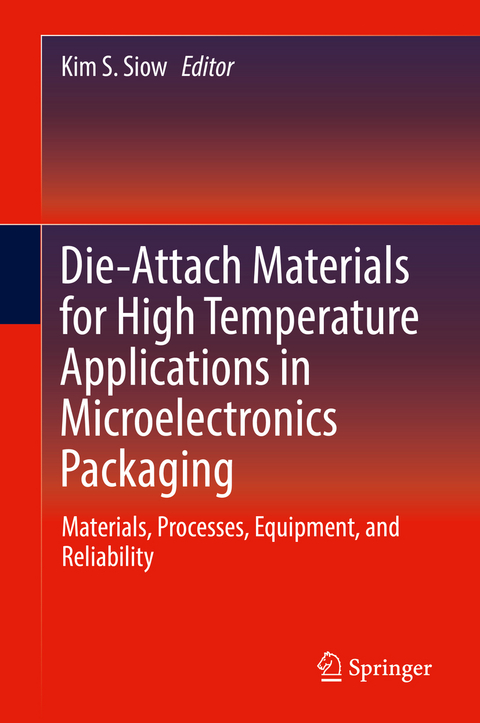
Die-Attach Materials for High Temperature Applications in Microelectronics Packaging
Springer International Publishing (Verlag)
978-3-319-99255-6 (ISBN)
This book presents the scientific principles, processing conditions, probable failure mechanisms, and a description of reliability performance and equipment required for implementing high-temperature and lead-free die attach materials. In particular, it addresses the use of solder alloys, silver and copper sintering, and transient liquid-phase sintering. While different solder alloys have been used widely in the microelectronics industry, the implementation of sintering silver and transient liquid-phase sintering remains limited to a handful of companies. Hence, the book devotes many chapters to sintering technologies, while simultaneously providing only a cursory coverage of the more widespread techniques employing solder alloys.
- Addresses the differences between sintering and soldering (the current die-attach technologies), thereby comprehensively addressing principles, methods, and performance of these high-temperature die-attach materials;
- Emphasizes the industrial perspective, with chapters written by engineers who have hands-on experience using these technologies; Baker Hughes, Bosch and ON Semiconductor, are represented as well as materials suppliers such as Indium;
- Simultaneously provides the detailed science underlying these technologies by leading academic researchers in the field.
Kim S. Siow is a Research Fellow at the Institute of Microengineering and Nanoelectronics, Universiti Kebangsaan Malaysia. Before joining IMEN, he has worked as a materials engineer at multinational companies and the National University of Singapore. His research interests are related to joining technologies using sintered silver for power electronics applications and surface modification using plasma technologies for biomaterials, adhesion and microfluidic applications. His recent review papers on sintered silver are among the top-ranked worldwide. He is a regular reviewer of journal papers for more than 20 international journals. A strong believer in giving back to community, he has served in various capacities organizing conferences such as 36-38th IEMT, ICSE (2014-2016), the 15th-20th EPTC (Singapore), as well as outreach programs at the University of Yangon. He completed his Ph.D. in Engineering (Minerals and Materials) at Ian Wark Research Institute under University of South Australia Presidential Scholarship as well as the Master of Applied Science and Bachelor of Applied Science (Materials Engineering) with Hons. degrees from Nanyang Technological University in 2007, 2000 and 1997 respectively. He is also a certified Project Management Professional, PMP®, since 2009.
Chapter 1: Silver Sintering and Soldering: Bonding Process and Comparison.- Chapter 2: Sintered Silver for LED Applications.- Chapter 3: Process Control of Sintered Ag Joint in Production for Die-Attach Applications.- Chapter 4: Thermomechanical Modeling of High-Temperature Bonded Interface Materials.- Chapter 5: Reliability and Failure Mechanisms of Sintered Ag as Die Attach Joint.- Chapter6: Morphological changes in sintered silver due to atomic migration.- Chapter 7: Doctrine of Equivalents and Sintered Silver (Ag) Paste as Bonding Materials.- Chapter 8: Sintered Copper : Chemistry, Process and Reliability.- Chapter 9: Transient Liquid Phase Bonding.- Chapter 10: Die attach materials for extreme conditions and harsh environments.
| Erscheinungsdatum | 09.02.2019 |
|---|---|
| Zusatzinfo | XX, 279 p. 175 illus., 122 illus. in color. |
| Verlagsort | Cham |
| Sprache | englisch |
| Maße | 155 x 235 mm |
| Gewicht | 607 g |
| Themenwelt | Technik ► Elektrotechnik / Energietechnik |
| Technik ► Maschinenbau | |
| Schlagworte | High temperature alloys • Hybrid Electric Vehicle • Lead-free die attach • Low temperature joining technology • Nano-silver sintering • Power Module • Process Control • Quality Control, Reliability, Safety and Risk • Sintered silver • Solder Alloys • Solder solidification |
| ISBN-10 | 3-319-99255-4 / 3319992554 |
| ISBN-13 | 978-3-319-99255-6 / 9783319992556 |
| Zustand | Neuware |
| Haben Sie eine Frage zum Produkt? |
aus dem Bereich


